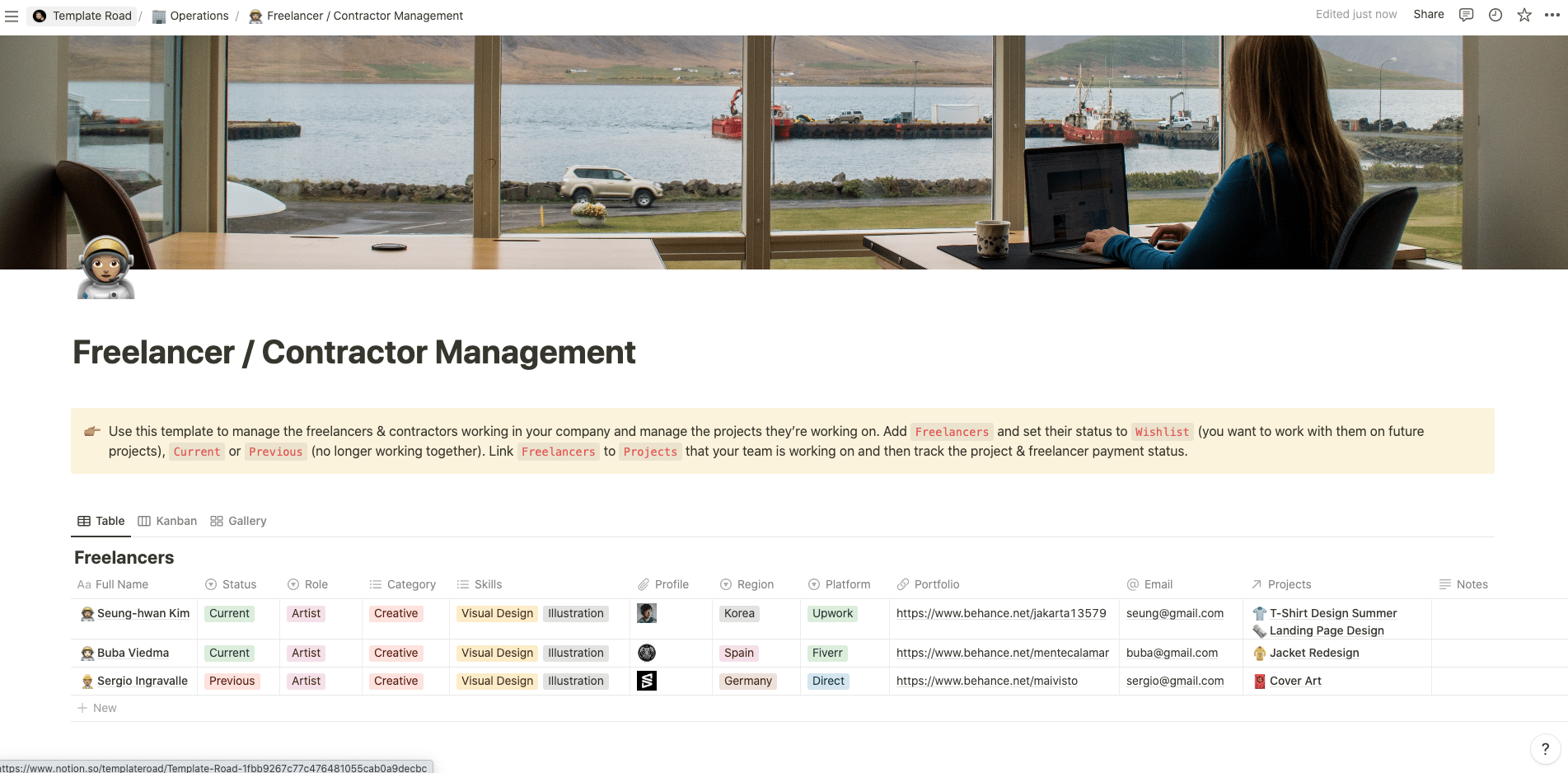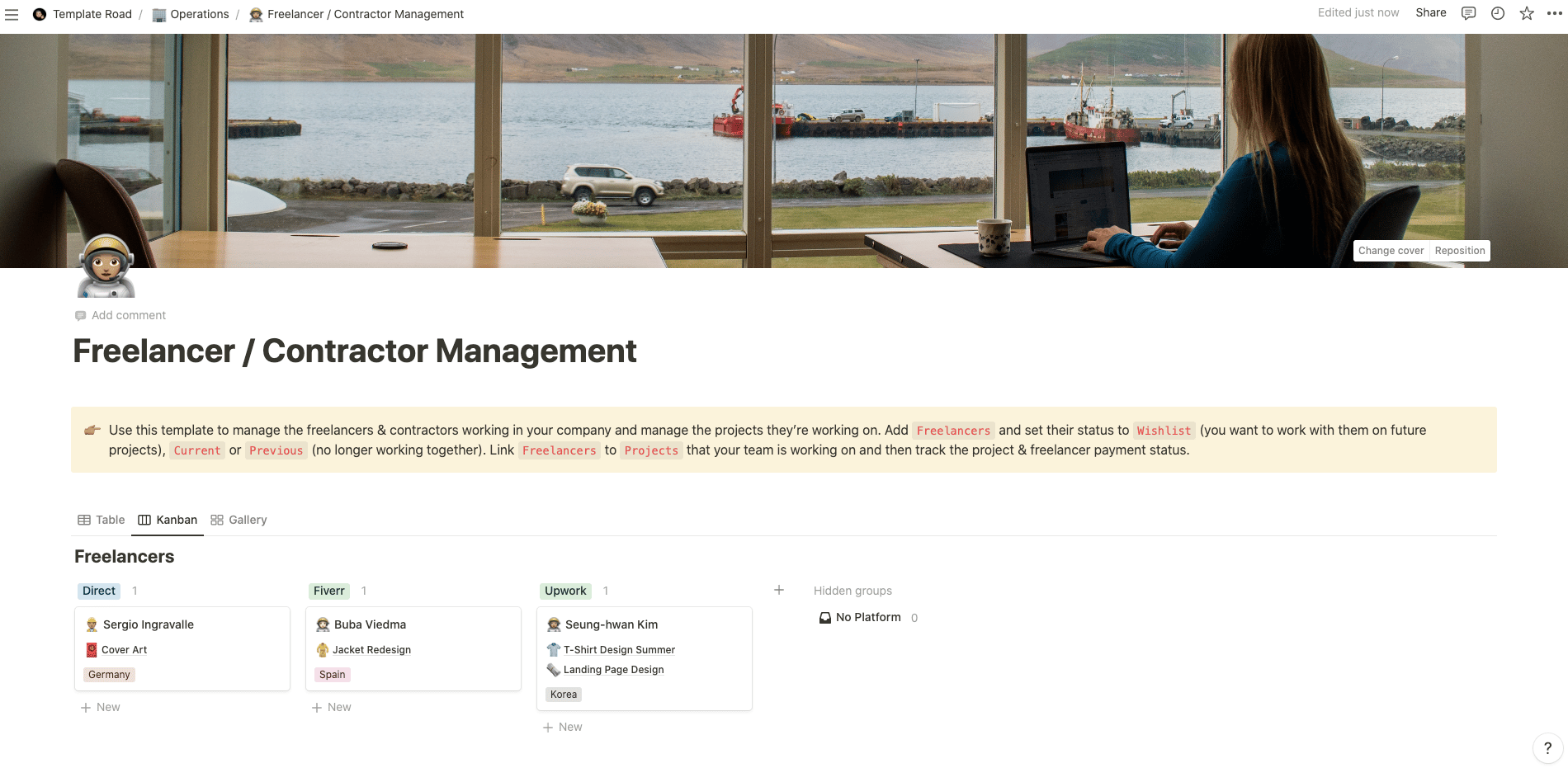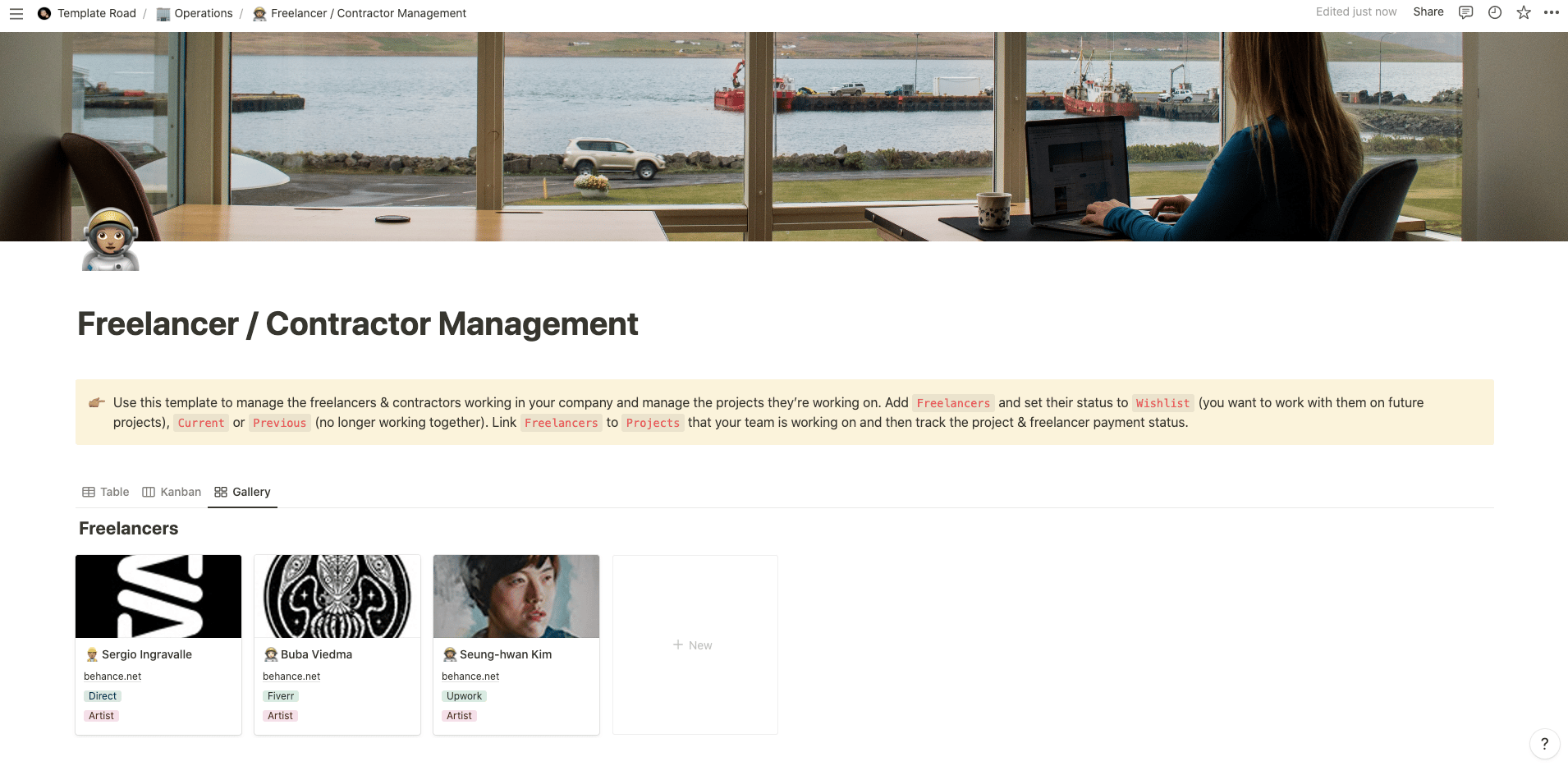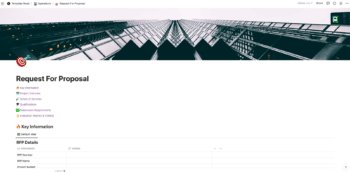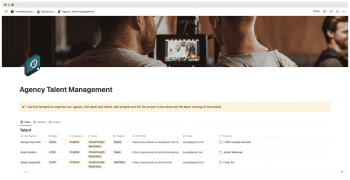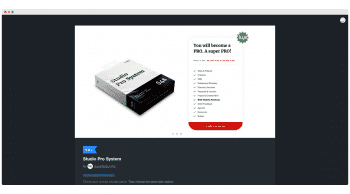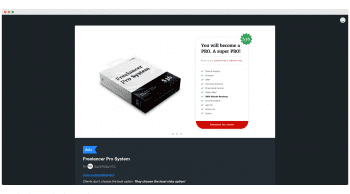This template is perfect for organising your outsourced freelancers and external contractors.
Contents
Notion – Contractor / Freelancer Management Template
This template is perfect for organising your outsourced freelancers and external contractors. Use this template to source, evaluate and track your contractors and freelancers. Link them to individual assignments and projects. Track feedback and comment on their performance. Manage contractor spend per project.
——————————————-
What you need before purchase
- Basic knowledge of how to use Notion
- Paid Notion account if you’re looking to add lots of content to your template / Notion account (sign up here). Not much content? You’re able to use their free account.
After purchase, you’ll be able to view the template immediately. The template can be added to your Notion account by:
- Click on the template download link in Gumroad
- When viewing the Notion template, click on the “Duplicate” link in the top-right of your screen
- The template will now be available in your own Notion account
What is a Freelancer / Contractor Management Template?
A Contractor Management Template is a pre-designed format or system used to effectively manage contractors and subcontractors working on a project. It provides a structured framework for tracking and organizing essential information related to contractors, their work scope, performance, compliance, and documentation. The template helps project managers and stakeholders ensure that contractors are properly onboarded, monitored, and managed throughout the project lifecycle.
Here are some common elements you might find in a Contractor Management Template:
1. Contractor Information: This section captures essential information about each contractor, including their company name, contact details, point of contact, and contract details. It helps maintain a centralized repository of contractor information for easy reference.
2. Scope of Work: This section outlines the specific scope of work or services provided by each contractor. It includes a detailed description of the tasks, deliverables, timelines, and any special requirements or specifications.
3. Contract Agreements and Documentation: This section tracks and organizes the contract agreements and related documentation for each contractor. It may include copies of contracts, insurance certificates, licenses, permits, and any other necessary legal documentation.
4. Safety and Compliance: This section focuses on tracking and ensuring that contractors comply with safety regulations, legal requirements, and industry standards. It may include documentation of safety training, certifications, permits, and inspection records.
5. Performance Evaluation: This section provides a framework for evaluating the performance of each contractor. It may include criteria such as quality of work, adherence to schedules, responsiveness to issues, and client satisfaction. Performance evaluations can help identify areas of improvement or recognize exceptional performance.
6. Communication and Correspondence: This section tracks communication and correspondence between the project team and contractors. It may include meeting minutes, email exchanges, and other forms of communication to ensure proper documentation and clarity in communication channels.
7. Payment and Invoicing: This section tracks payment and invoicing details for each contractor. It includes records of invoices, payment schedules, and any additional financial information related to contractor payments.
8. Change Orders and Variations: This section tracks any changes or variations to the original scope of work or contract agreements. It helps manage change orders, document any adjustments to the project scope, and track the associated costs and approvals.
9. Project Timeline and Milestones: This section provides an overview of the project timeline and milestones related to contractor activities. It helps ensure that contractors are aware of their respective deadlines and deliverables and allows for effective coordination and scheduling.
10. Contractor Performance History: This section maintains a historical record of each contractor’s performance on past projects. It can include ratings, feedback, and notes from previous projects to inform future decision-making when engaging contractors.
The purpose of a Contractor Management Template is to streamline and enhance the management of contractors throughout a project. It helps ensure that contractors are properly vetted, contracted, and monitored, promoting effective communication, compliance, and performance evaluation. The template serves as a centralized tool for maintaining contractor information and documentation, reducing administrative burden and improving transparency.
Please note that the specific elements and design of a Contractor Management Template may vary based on individual preferences, the scale of the project, and the specific requirements of the contractor management process. It is recommended to customize the template based on your specific needs and adjust the sections or prompts as necessary.
How do I create a Contractor Management Template in Notion?
To create a Contractor Management Template in Notion, you can follow these steps:
1. Open Notion and create a new page or open an existing one where you want to create the template.
2. Decide on the structure and layout of your template. Consider the elements you want to include in your Contractor Management Template, such as contractor information, scope of work, contract agreements and documentation, safety and compliance, performance evaluation, communication and correspondence, payment and invoicing, change orders and variations, project timeline and milestones, and contractor performance history.
3. Start by adding headings or subheadings for each element. You can use the “/” command in Notion to quickly create different block types, such as headings, subheadings, or bullet points.
4. Under the “Contractor Information” section, create fields or bullet points to capture essential information about each contractor. This can include their company name, contact details, point of contact, and contract details.
5. Create a section for “Scope of Work” and outline the specific tasks and deliverables for each contractor. Include a detailed description, timelines, and any special requirements or specifications.
6. Add a section for “Contract Agreements and Documentation” to track and organize the contract agreements and related documentation for each contractor. This may involve attaching files or linking to external documents within Notion.
7. Create a section for “Safety and Compliance” and outline the requirements and documentation related to safety regulations and compliance. This can include safety training records, certifications, permits, and inspection records.
8. Include a section for “Performance Evaluation” and define the criteria for evaluating the performance of each contractor. This can include quality of work, adherence to schedules, responsiveness to issues, and client satisfaction. You can add fields or bullet points to record evaluations and feedback.
9. Create a section for “Communication and Correspondence” to track communication between the project team and contractors. This can include meeting minutes, email exchanges, and other forms of communication. Add fields or bullet points to document the details of each communication.
10. Add a section for “Payment and Invoicing” to track payment and invoicing details for each contractor. This can include records of invoices, payment schedules, and any additional financial information related to contractor payments.
11. Create a section for “Change Orders and Variations” to track any changes or variations to the original scope of work or contract agreements. Add fields or bullet points to document the details of change orders, associated costs, and approvals.
12. Include a section for “Project Timeline and Milestones” to provide an overview of the project timeline and milestones related to contractor activities. This helps ensure that contractors are aware of their respective deadlines and deliverables.
13. Create a section for “Contractor Performance History” to maintain a historical record of each contractor’s performance on past projects. This can include ratings, feedback, and notes from previous projects. Add fields or bullet points to record the relevant information.
14. Customize and refine the template: Adjust the formatting, colours, or styles to make the template visually appealing and easy to read. You can also add additional sections or customize the template based on your specific needs.
15. Save and reuse: Once you have completed your template, save it for future use. You can duplicate the page to create Contractor Management templates for different projects or modify the template as needed for various contractor management scenarios.
By following these steps, you can create a Contractor Management Template in Notion that suits your specific contractor management needs. Remember to customize the template based on your requirements and adjust the structure or sections as necessary.
